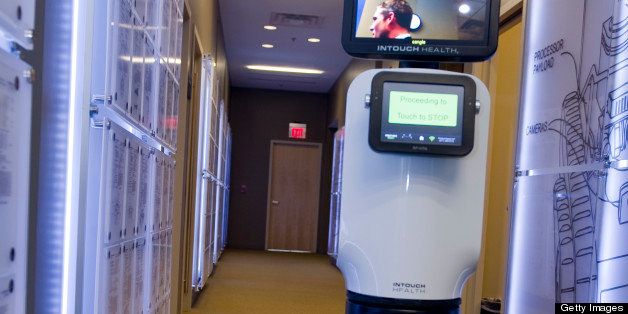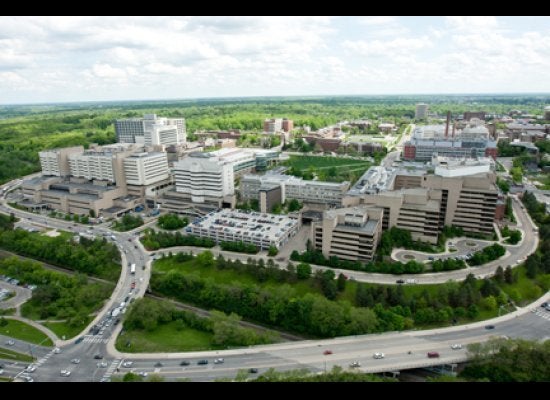
Robots that will link five San Fernando Valley hospitals together were unveiled Monday at Providence Saint Joseph Medical Center, where experts said the new technology will create a first of its kind stroke care network in Southern California.
Called the RP-VITA, the 5 1/2-foot-tall armless robot can glide through the hallways of an emergency department to a patient's bedside with a tap on an iPad button. Then, through a two-way camera, a neurologist from Providence Saint Joseph's can be seen on the monitor mounted on the robot. The Burbank doctor can engage with patients and nurses at emergency departments in Encino, Sherman Oaks, Panorama City or Tarzana where robots have been dispatched.
"We used to compete with each other, but now we're forming a better network of care for patients," said Mike Rembis, chief executive officer at Providence Saint Joseph.
The goal behind the RP-VITA "telestroke program" is to assess and provide care in hospitals where 24-hour access to stroke specialists may be unavailable, said Dr. Ronnie Karayan, medical director for the stroke center at Providence Saint Joseph.
"The faster a (stroke) patient is diagnosed and treated, the better the outcome," Karayan said. "This can be a challenge in small urban community hospitals where 24-hour access to stroke specialists is unpredictable or not available."
The robots are part of a continually growing trend in health care called telemedicine, in which medical information is discussed and transferred via telephone or online in real time. The technology allows specialists to offer timely help to rural or small community hospitals.
The industry is still new, but will likely expand as the need for specialty care continues at a time when the nation faces physician shortages, said Jim Lott, executive vice president of the Hospital Association for Southern California.
"Telemedicine is the new age solution to the specialist shortage that is looming," Lott said. "Many hospitals are coming on board with that and we're going to see more of it, especially in rural areas and even in urban hospitals that may not have specialists."
Lott said the use of telemedicine is becoming an accepted way to deliver health care. By linking to medical centers with specialty care, hospitals use telemedicine to fulfill their licensing obligation to provide all kinds of emergency care.
"Everyone accepts this new technology," he said. "No one's really challenging the ethical or quality of care of consultation. But you're going to have people who resist being evaluated remotely."
Still, Lott calls it a win for physicians, hospitals and patients. "It's a triple win whammy," he said.
At least 795,000 Americans experience a stroke annually while 130,000 people die of it each year, making it the leading cause of death in the nation, according to the federal Centers for Disease Control and Prevention. Stroke also causes disability and reduces mobility in more than half of stroke survivors age 65 and older, reports the CDC.
The RP-VITA's can help hospitals evaluate and provide care quicker to stroke patients, who would otherwise have to wait for a specialist to arrive, or else experience longer ambulance rides to certified stroke care facilities, said Michael Chan, general manager of InTouch, which worked with iRobot Corp. to develop RP-VITA. The RP-Vita is a new model, Chan said, and there are just under 20 being used worldwide, including at the Ronald Regan UCLA Medical Center.
"What's really unique about this program is that we're looking at using the resources of various different hospitals to bring better services to the entire community," said Dr. Jason Greenspan, the associate director of emergency services at Sherman Oaks Hospital, Mission Community Hospital, Encino Hospital.
"Stroke is such a debilitating disease and time is critical. You should never have to drive past your local ER to get expert stroke care."
(c)2013 the Daily News (Los Angeles)
Visit the Daily News (Los Angeles) at www.dailynews.com
Distributed by MCT Information Services
